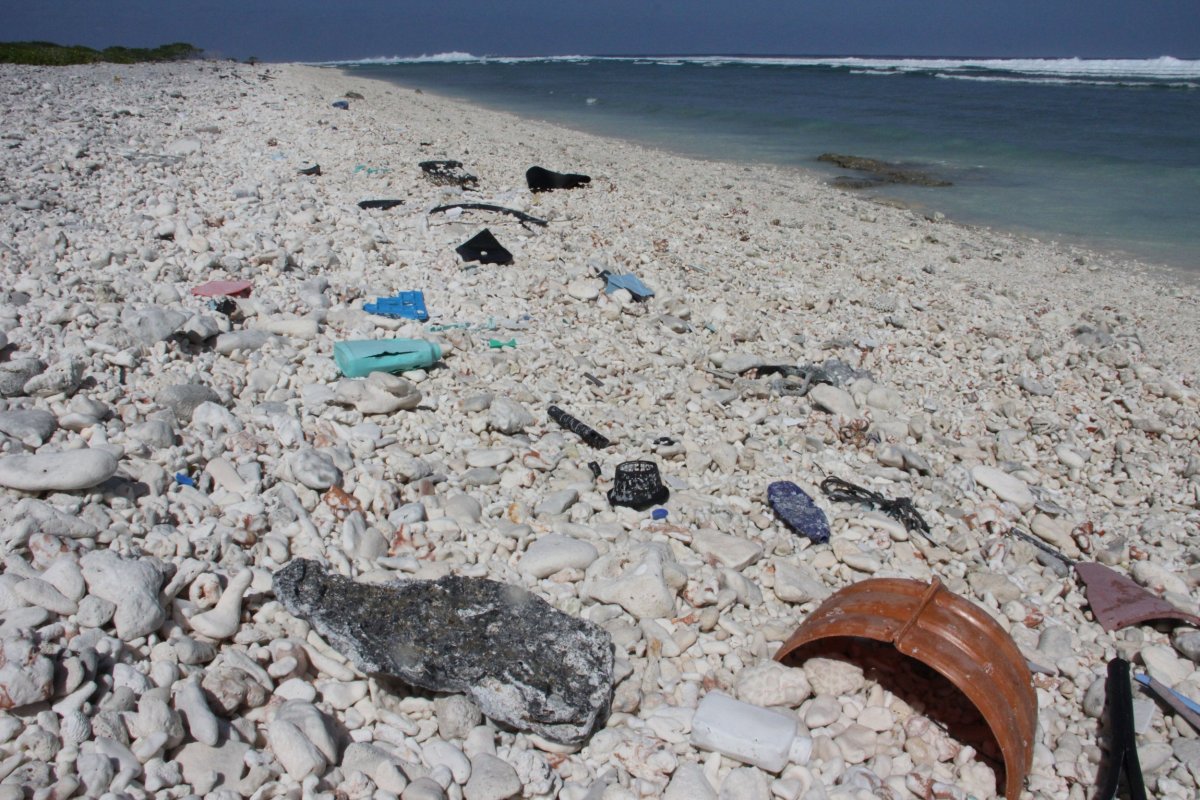Updated | You may have heard of the Great Pacific Garbage Patch. If you haven't, it's exactly what it sounds like: a massive vortex of trash floating in the Pacific Ocean.
Scientists studying this ocean trashcan have discovered it contains at least 79,000 tons of plastic—that's up to 16 times higher than previous estimates. Measuring about 620,000 miles², the island of rubbish stretches across an area twice the size of Texas.
Although its often called a patch or island, the garbage is actually spread out like a soup of plastics, rather than a continuous mass of visible trash.
Researcher Laurent Lebreton from The Ocean Cleanup and colleagues quantified the glut of debris in a study published Thursday in Scientific Reports. They discovered not only did the patch contain much more plastic than previously believed, but it is rapidly accumulating more and more microplastics.
Read more: Microplastics: Bottled Water May Contain Thousands of Pieces of Plastic Waste
The Great Pacific Garbage Patch is a huge hoard of persistent ocean plastic, chemical sludge and other debris. Buoyant, hard-to-decompose trash becomes trapped over decades in the currents of a massive ocean vortex—in this case, the Northern Pacific Gyre. This patch floats in subtropical waters between California and Hawaii.

Bottles, Fishing Nets, Ropes
The team used aerial images as well as data from 652 net tows to give them a more accurate picture of the trash than previously described. They found that plastics made up 99.9 percent of the debris: 46 percent was made up of fishing nets and more than 75 percent of the plastic pieces measured more than 5cm.
Researchers identified individual pieces of plastic: containers, lids, ropes and bottles. They even spotted production dates ranging from the 1970s to the present decade. One from 1977, 7 from the 1980s, 17 from the 1990s, 24 from the 2000s and 1 from 2010.
99 Percent of Microplastic in the Ocean Is Missing—scientists Just Worked Out How to Find It
Microplastics measuring 0.02 to 0.2 inches made up 8 percent of the total plastic. That might not seem like a lot, but it equates to 94 percent of the 1.8 trillion pieces of plastic floating in the patch. The volume of microplastic in the Great Pacific Garbage patch, they discovered, has increased dramatically since the 1970s.
"We knew most pieces are comprised of microplastics; however, when you look at the total available mass of plastic, most material is contained in large debris that may degrade into harmful microplastics over time," Lebreton told Gizmodo.
This could be bad news for sea life. Fish end up eating dirty microplastics, and these might make their way up the food chain, Lebreton told Newsweek. "[A] small fish eats the dirty plastic, big fish eats the small fish and pollutants go up the food chain," he explained.
Larger debris like nets, he added, may trap fish, marine mammals and sea turtles.
Growth in Plastic Pollution
A growth in the volume of plastic pieces—big and small—has likely fuelled the team's results. The authors suggest an increasing level of ocean plastic pollution could well be behind the results, particularly after the 2011 Tohoku tsunami.
More research is needed, the authors wrote said, to work out exactly where all this plastic trash is coming from, and how long it can linger in the vortex.
Changing plastic usage habits, Lebreton told Newsweek, could help stem the growth of the patch. "[Stepping] away from single use plastics is a good start," he said. "Reduce, Reuse, Recycle!"
This article has been updated to include comment from Laurent Lebreton.
Uncommon Knowledge
Newsweek is committed to challenging conventional wisdom and finding connections in the search for common ground.
Newsweek is committed to challenging conventional wisdom and finding connections in the search for common ground.
About the writer
Katherine Hignett is a reporter based in London. She currently covers current affairs, health and science. Prior to joining Newsweek ... Read more
To read how Newsweek uses AI as a newsroom tool, Click here.








